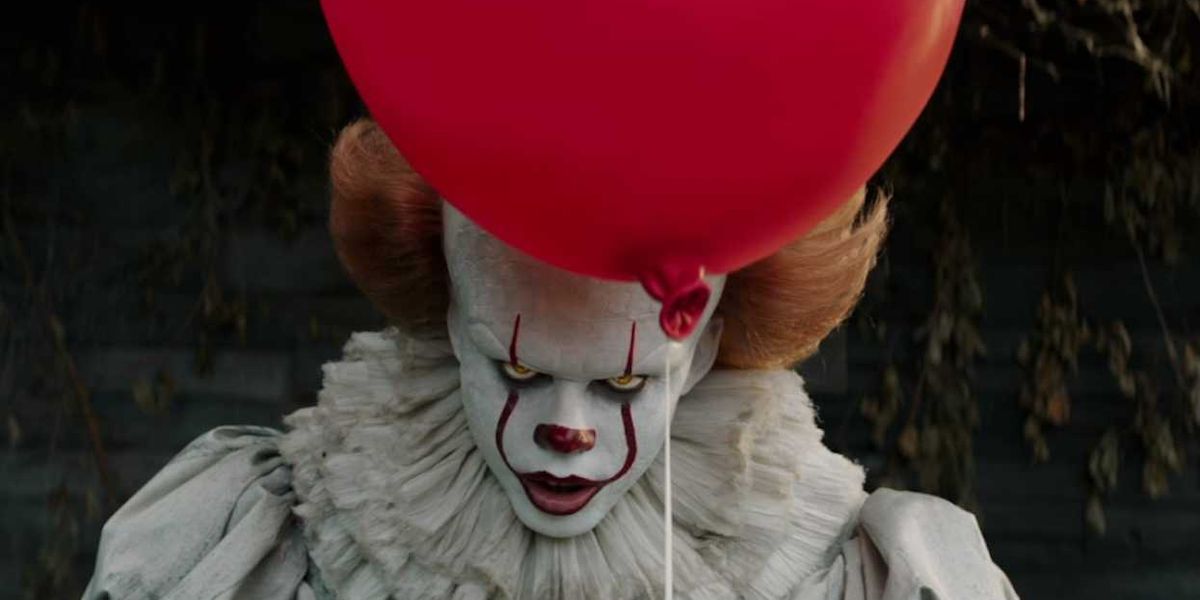When a horror film features a children’s prop on its poster, know that you’re in for a ride. There is something about taking a children’s toy and turning it into something sinister. At the very first glance, such visual motifs are great symbols for the loss of innocence, but more often than not, they also elevate the horror by adding layers to it. For instance, in Andrés Muschietti’s blockbuster horror film It (2017), a red balloon became the bearer of bad news.
In this article, we’re looking at how It turned a simple children’s toy into an icon of terror and peril.
The Story
It follows a group of seven kids, “The Losers Club,” made up of Bill and his friends, in their fight against the shape-shifting demonic entity, Pennywise the Clown, after he abducts Bill’s younger brother, Georgie. At the end of the film’s first installment (Chapter One), although the kids emerge victorious, fighting a sinister entity that preys on their fears, they aren’t able to kill Pennywise. As he vanishes into thin air, we’re left wondering if this is just the beginning of the end.
While the sequel is weaker than the original film, the It universe continues to be one of the most iconic horror franchises that explores our relationship with our fears.
Pennywise’s Red Balloon

The red balloon, as a visual motif, has been used in many films— M. Night Shyamalan’s The Sixth Sense, Albert Lamorisse’s The Red Balloon, Jeff Tomsic’s Tag, and, yes, It, to name a few.
Each time the balloon has represented a different emotion. Sometimes it is used as a beacon of hope, other times it represents innocence and the spirit of childhood; sometimes it’s an embodiment of joy against the backdrop of mundanity or harshness. It completely flips the script by using it as a symbol for the onset of danger—not exactly how Shyamalan uses it in The Sixth Sense; instead, as a straight-up visual alert, like a stop sign on train tracks.
How the Balloon Communicates Menace1. The Antagonist’s Sidekick
Early on, Muschietti establishes the red balloon to be associated with Pennywise. This direct link with the antagonist flips the emotions that are traditionally associated with a red balloon. At the same time, the red balloon matches the style of Pennywise: red hair, red nose, and red lips. Also, hello… he’s a clown… Clowns love balloons. Before we realize, the red balloon becomes a visual embodiment of Pennywise himself.
2. The Antagonist’s Messenger
Muschietti takes it a step further by turning the red balloon into Pennywise’s messenger. It’s almost as if Pennywise sends it before as a harbinger of death to set the stage. Target? Locked! Fear Quotient? All-time high! Evilness? Full throttle! It’s time for the villain’s grand entry!
3. The Death of Innocence
The fact that the kids (adults, too) are scared of something as joyous as a red floating balloon speaks volumes about the subversion of the traditional implications associated with this universal childhood muse, used by the narrative. Pennywise’s intimate connection with a red balloon marks the death of innocence. It highlights how anything and everything can be fatal when in the wrong hands (not like Pennywise uses the balloon to kill). The fact that terrible things happen each time the red balloon comes on screen helps keep the anticipation high throughout the narrative, as each appearance of the red balloon trains the viewers to associate negativity with it—something like Pavlov’s experiment (no offense).
It is iconic because it presents more than horror. Let us know your favorite moments from the movie.

